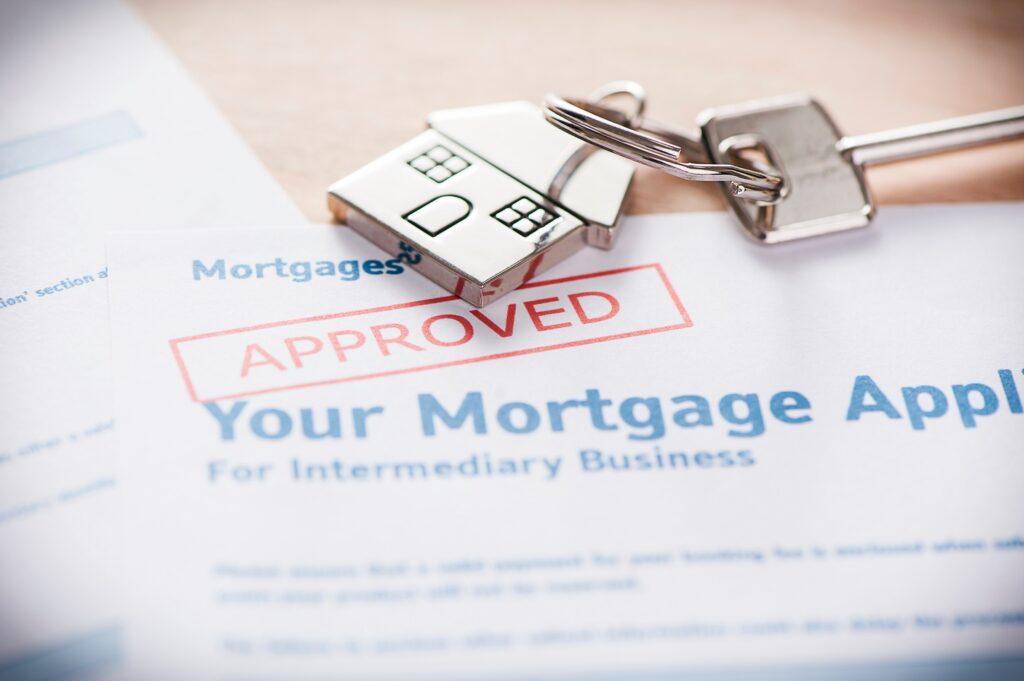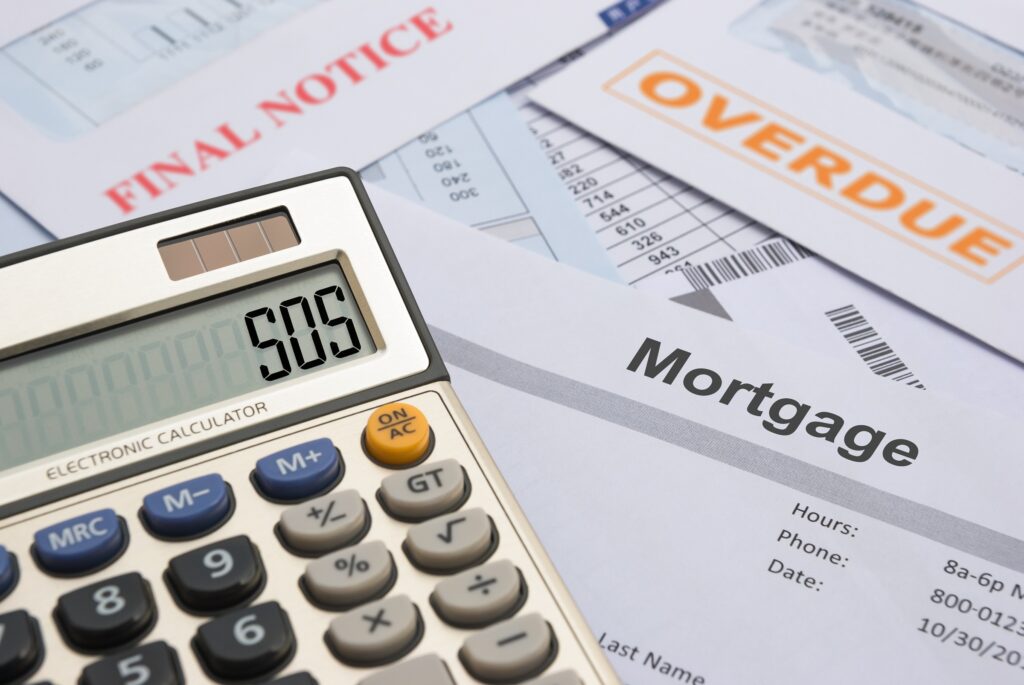Are you currently on a fixed rate home loan? Have you heard about the ‘fixed rate cliff’? This post is for you, and believe us, you don’t want to skip this.
If your fixed rate loan is coming to an end this year, you’re soon going to be paying a lot more towards your mortgage each month, thanks to the sharp interest rate rises we’ve seen this past year. This is being called the ‘fixed rate cliff’. In this post we’ll explain the situation, and give you some advice to help you prepare, and ride out the wave until interest rates are predicted to fall towards the end of the year or through 2024.

But first, let’s get some bank lingo straight:
What is a fixed rate loan?
When you sign up for a home loan, your monthly interest rate is set (or, fixed) at a certain percentage, and you pay the same interest every month for an agreed amount of time – usually 1, 2, 3, 4 or 5 years. When that time period ends, your loan switches over to a variable interest rate.
Okay, what is a variable rate loan?
When you sign up for a home loan, your monthly interest rate can go up or down, depending on what’s happening in the market.

What’s the background to the ‘fixed rate cliff’?
During COVID, particularly during 2021, borrowers wanted certainty about their home loan repayments, and banks were lending money at emergency level, record-low interest rates. This led to a surge in borrowers choosing a fixed rate term for their home loan. Meaning, for the past 2 years, those borrowers have been enjoying record low interest rates.
Usually, fixed rate lending only makes up about 15% of all new mortgages, but in July and August of 2021 this figure grew in popularity to as high as 46%.
Now, 2 years on, these fixed rate loan periods are about to come to an end. And when this happens, these loans will revert to variable loans at much higher interest rates.
This situation is being referred to as the ‘fixed rate cliff’. As in, you’ve got a big climb ahead of you.
‘The fixed rate cliff has emerged as one of the biggest potential risks to housing market values, and overall stability in 2023’, according to Eliza Owen, CoreLogic’s Head of Research, speaking ahead of the nearly 900,000 fixed rate loans originated during the depths of COVID coming to an end through this year.
It’s crucial for anyone coming off a fixed interest rate to understand that your revert rate (the variable interest rate you’ll start paying after your fixed term ends) is not going to be the bank’s best rate – it could even be their worst.
To be frank, banks do this because they count on the fact that a lot of people won’t be bothered to look into their home loan or go to the trouble of changing it. But you will be paying more interest than you need to be, which is why it’s critical that you contact a mortgage broker (check my diary now) to help find you a better deal.

What does this mean for you?
If you’re one of the many borrowers who locked in a low rate through 2021, your repayments are about to skyrocket.
With fixed rate loans coming to an end this year, borrowers are about to be hit with the effect of the most aggressive rate increase cycle in over 30 years. At the time of writing (April 2023) rates have risen by 3.5% from the lows experienced in 2021.
How much extra will you pay when your fixed rate ends?
To start with an example, let’s say in 2021 your home loan required you to pay $2,795 towards your mortgage each month. In 2023, thanks to interest rate rises, when your fixed term ends, you’ll suddenly need to pay at least $4,295 each month. Yes – an extra $1,500 extra each month.
This represents a 54% increase to the cost of your mortgage. Ouch.The table below shows other examples of what the situation looks like across a variety of loan amounts so you can get a quick idea of how your monthly repayments might increase. It’s worth noting that each bank’s revert rate will be slightly different, and could be even more than what we’ve shown in our example.
| Loan amount | $500,000 | $750,000 | $1,000,000 |
| Fixed rate April 2021 | 1.98% | 1.98% | 1.98% |
| Variable rate April 2023 (approx.) | 5.48% | 5.48% | 5.48% |
| Your monthly repayment under the fixed term | $1,843 | $2,765 | $3,686 |
| Your monthly repayment under the new variable rate | $2,833 | $4,249 | $5,665 |
| Your monthly repayment increase | $990 | $1,484 | $1,979 |
No matter how big your loan is, there’s going to be a significant additional expense in your monthly budget. The big unknown in all of this is how households are going to cope with these new repayments.
So, what can you do about the fixed rate cliff?
*Deep breaths* Here’s your action plan:
- Start budgeting
The first thing to do now is to act as though your rate has already increased so you’re not hit with a shock when it happens for real. That means to make a budget, and start putting away the extra money you’ll need for your home loan repayments every month, NOW.
- Contact a broker or your bank
You’ll need to assess if you’re still getting a good deal out of your home loan. About 2 to 3 months before your fixed rate ends, reach out to your broker or bank to see if they can improve your rate before you revert to the variable rate. This way you’ll be able to roll from your fixed rate straight on to a competitive variable rate.
‘When fixed terms come to an end, borrowers will need to refinance their loan.’
– Corelogic Property Pulse, March 2023
Did you know most banks will reduce rates for new customers?
Although all banks follow the Reserve bank of Australia when it comes to interest rate increases (meaning, interest rates have risen on all loans, no matter which bank), did you know that most banks will periodically reduce their interest rates for new customers, to entice them to sign up?
This is a really common practice, and it means that you could be paying more than you need to be. Banks are competing for new business, and they want your loan. Gone are the days of staying with one bank for the life of your loan – there is no reward for this – and if you follow this belief you’ll almost certainly pay more in interest in the long run (this is known as paying the ‘lazy tax’).
So, at the very least, it’s worth contacting your current bank to see if they’ll discount the new variable rate to one that’s comparable with a new customer’s loan.
If they won’t budge (or you don’t like their offer) talk to a mortgage broker about 2 months before your fixed rate ends. Brokers can use their expertise to help you find a new loan that’s better suited to your current needs. Remember, brokers can compare deals for you from 30+ banks, not just from yours.

And what if you don’t think you’ll be able to meet these new repayments?
If you’re reading this and thinking ‘There’s no way I can afford these increases’, you can call the National Debt Helpline on 1800 007 007. This is a government-funded helpline that can put you in contact with free financial counselling and help you negotiate altered repayment plans with banks and other suppliers, like phone, internet and electricity companies.
This may be enough to help you ride out the current peak of interest rates until they’re set to dip (by how much, we don’t know) heading into 2024. Unfortunately, the fact is that some households will simply not have the available income to cover their increased mortgage repayments. If you think this might be the case, you need to act smart: crunch your numbers now, and figure out whether you might need to consider downsizing your home to something more affordable.
Is there any good news?
The good news is that there are options available to refinance to a better deal. There are great offers for both owner-occupiers and investors, with banks pulling out all the stops to get you to switch to them. Some banks are even offering cash-back incentives of between $2,000 and $4,000 to new borrowers. This will usually cover the costs of refinancing (like application and settlement fees) and still leave you with a bit of extra pocket money.
And don’t forget, while ever you’re on a variable loan your interest rate could still go down. Some forecasts are already predicting a reduction in interest rates as early as the end of 2023 and into 2024. So even though we don’t expect to see rates as low as COVID times again, there may already be light at the end of the tunnel.
The best course of action?
Tighten your belts now, talk to your bank, or better yet, a broker, to make sure you’re getting the best possible rate.
Whatever your situation is, if you need to reassess your current loans, book in a time to talk to Lindsay about your options, and find out how much you could save.